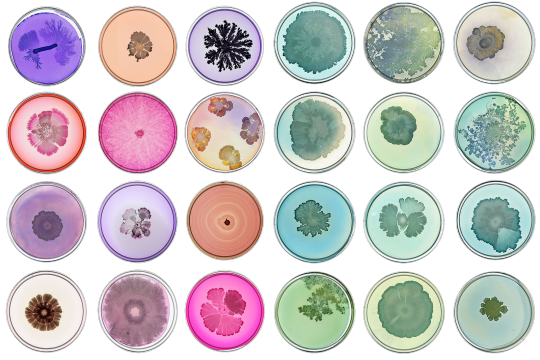#tal danino
Text

"Microbial Rainbow" (detail), Tal Danino, 2018
source
#fav#microbes#microbiology#petri dish#green#pink#purple#art#bacteria#bacteria art#microbe art#microbial rainbow#tal danino#2018#fav art#upload#detail#art detail#🧫#🦠#Petri dish art
8K notes
·
View notes
Text
Who are the hostages still held by Hamas?
On October 7, 2023, 253 Israelis and foreign nationals were kidnapped to Gaza by Hamas and gazan civilians. Since then, 105 were released in a prisioner exchange deal, 4 were released by Hamas and 3 were rescued.
However, 134 remain in captivity (4 of those were kidnapped prior to 2023). A recent investigation has concluded that more than a fifth of the hostages are dead and the fate of some other hostages remains unknown. This video explains how doctors determine which hostages are dead, based on the nature of their injury and by analyising footage and the victims' last phone calls. Additionally, during the operation in Gaza, the IDF has recovered the bodies of a few victims and returned to their families for burial.
Since I couldn't find this all in one place, I've compiled a list of: 1) hostages who are presumed alive; 2) hostaged whose death has been reported/confirmed; 3) hostages who were released or rescued. In the group of hostages presumed to be alive who haven't been released, the youngest is 1-year-old Kfir Bibas and the oldest hostage is Iraqi-born 85-year old Shlomo Mansour.
As we learn more information, I'll continue to update this post.
They need to come back home. I'm hoping for more successful rescue operations soon. Keep them in your thoughts.

Hostages still held by Hamas (presumed alive or fate unknown):
(1) (2) (3)
Abraham Eitan Mor (23)
Abraham Munder (79)
Agam Berger (19)
Alex Danzig (75)
Alexander (Sasha) Trupanob (28)
Alexander Lobanov (32)
Almog Meir Jan (21)
Almog Sarusi (26)
Alon Ohel (22)
Amit Buskila (28)
Amiram Cooper (85)
Andrey Kozlov (27)
Arbel Yehoud (28)
Ariel Bibas (4)
Ariel Cunio (26)
Avera Mengistu (37) – Has been held hostage since 2014
Avinathan Or (30)
Bar Kupershtein (22)
Bipin Joshi (23)
Carmel Gat (39)
Chaim Peri (79)
Chanan Yablonka (42)
Daniel Gilboa (19)
David Cunio (33)
Dolev Yehoud (35)
Doron Steinbrecher (30)
Dror Or (48)
Edan Alexander (20)
Eden Yerushalmi (24)
Eitan Horn (37)
Eli Sharabi (51)
Eliya Cohen (26)
Elkana Bohbot (34)
Elyakim Libman (24)
Evytar David (23)
Gadi Moses (79)
Gali Berman (26)
Guy Gilboa-Dalal (22)
Hamzah Al-Zayadni (22)
Hersh Goldberg Polin (23)
Hisham al-Sayed (35) - Has been held hostage since 2015
Yair Horn (45)
Idan Shivi (28)
Itzhak Gelenter (56)
Itzhk Elgarat (68)
Kaid Farhan Elkadi (53)
Karina Ariev (19)
Kfir Bibas (1)
Lior Rudaeff (61)
Liri Albag (18)
Matan Angrest (21)
Matan Zangauker (24)
Maxim Herkin (35)
Michel Nisenbaum (59)
Muhammed Alatrash (40)
Naama Levy (19)
Nadav Popplewell (51)
Nimrod Cohen (19)
Noa Argamani (26)
Oded Lifshitz (83)
Ofer Kalderon (53)
Ohad Ben Ami (55)
Ohad Yahalomi (49)
Omer Neutra (22)
Omer Shem Tov (21)
Omer Wenkert (22)
Omri Miran (46)
Or Levy (33)
Ori Danino (24)
Oryon Hernandez (30)
Rom Braslavski (19)
Romi Gonen (23)
Ron Benjamin (53)
Sagui Dekel-Chen (35)
Samuel Keith Siegel (64)
Segev Kalfon (25)
Shiri Bibas (32)
Shlomi Ziv (40)
Shlomo Mansour (85)
Tal Shoham (38)
Tamir Nimrod (19)
Tsachi Idan (51)
Yagev Buchshtab (34)
Yagev Kirsht (34)
Yarden Bibas (34)
Yoram Metzger (80)
Yosef Al-Zayadni (53)
Yosef Ohana (23)
Ziv Berman (26)

Hostages confirmed/reported dead:
(Note: I couldn't find a report with the full list, but if you google each individual name you can find sources.)
Alon Shamriz (26) – Mistakenly killed by the IDF
Arye Zalmanovich (85) - Death reported by Hamas. He was forced to appear in a propaganda video.
Asaf Hamami (41)
Aviv Atzili (49)
Daniel Oz (19) - Killed on Oct. 7. Status updated on 25/02/24
Daniel Perez (22) - Killed on Oct. 7. Status updated on 17/03/24
Dror Kaplun (68)
Eden Zecharya (28)
Eitan Levy (53)
Elad Katzir (47) - Murdered by the Palestinian Islamic Jihad. His body was recovered in Khan Yunis. Status updated on 06/04/24.
Eliyahu Margalit (75)
Gad Haggai (73)
Guy Iluz (26)
Hadar Goldin (32) - Body held hostage since 2014
Ilan Weiss (56)
Inbar Haiman (27)
Itay Chen (19) - Killed on Oct. 7. Status updated on 12/03/24.
Itay Svirsky (35) – Killed by Hamas in captivity. His body was shown in a propaganda video
Joshua Loitu Mollel (21) – A released video shows how he was brutally murdered by a group of men on October 7
Judy Weinstein (70)
Kiril Brodski (19)
Maya Goren (56)
Mordechai Yonathan Samerano (21) - His body was taken to Gaza
Nik Beizer (19)
Noa Marciano (19) – Her body was found near the Al-Shifa hospital
Ofir Tzarfati (27)
Ofra Keider (70)
Oren Goldin (34)
Oron Shaul (30) – Body held hostage since 2014
Ran Gvlli (24)
Ravid Katz (41)
Ron Scherman (19)
Ronen Engel (54)
Sahar Baruch (24) – Killed by Hamas during a failed hostage rescue operation
Samer Talalka (22) – Mistakenly killed by the IDF
Shay Levinson (19)
Shani Louk (22) - Body taken to Gaza
Tal Chaim (42)
Tamir Adar (38)
Tomer Ahimas (20)
Uriel Baruch (35) - Status updated on 26/03/24
Yair Yaakov (59) – Sons and girlfriend were released; murdered on Oct. 7
Yehudit Weiss (65) – Her body was found near the Al-Shifa hospital
Yossi Sharabi (53) – His dead body was shown in a propaganda video
Yotam Haim – Mistakenly killed by the IDF
Ziv Dado (36)


Released/rescued hostages:
(1) (2)
Abigail Edan, 4, American citizen
Ada Sagi, 75
Adi Shoham, 38
Adina Moshe, 72
Agam Goldstein-Almog, 17
Aisha Ziyadne, 17
Alma Avraham, 84
Alma Or, 13
Amit Shani, 15
Amit Soussana, 40
Anucha Angkaew
Aviv Asher, 2, German citizen
Aviva Adrienne Siegel, 62
Bancha Kongmanee, Thai national
Bilal Ziyadne, 18
Boonthom Phankhong, Thai national
Buddee Saengboon, Thai national
Chalermchai Sangkaew
Channa Peri, 79
Chen Goldstein-Almog, 48
Clara Marman, 63, Argentine citizen
Daniel Aloni, 44
Dafna Elyakim, 15
Doron Katz Asher, 34, German citizen
Ditza Heiman, 84
Emilia Aloni, 5
Emily Toni Kornberg Hand, 8
Emma Cunio, 3, Argentine citizen
Erez Calderon, 12, French citizen
Eitan Yahalomi, 12, French citizen
Ela Elyakim, 8
Fernando Marman – Rescued by the IDF
Gabriela Leimberg, 59, Argentine citizen
Gal Goldstein-Almog, 11
Gal Tarshansky, 13
Gelienor (Jimmy) Pacheco, 37, Filipino national
Hagar Brodetz, 40
Hanna Katzir, 77
Hila Rotem Shoshani, 12
Ilana Gritzewsky Kimchi, 30
Irena Tati, 73, a Russian citizen, was included on the list but released separately from the exchange deal.
Itay Regev Jerbi, 18
Juckapan Sikena
Judith Raanan, 59 [Released 22/10/23]
Karina Engel-Bart, 51, Argentine citizen
Keren Munder, 54
Komkrit Chombua
Kong Saelao
Liam Or, 18
Liat Beinin Atzili, 49, American citizen
Luis Har – Rescued by the IDF
Manee Jirachart
Margalit Mozes, 78, German citizen
Maya Regev Jirbi, 21
Meirav Tal, 53
Mia Leimberg, 17, Argentine citizen
Mia Shem, 21, French citizen
Mika Engel, 18, Argentine citizen
Mongkhol Phajuabboon, Thai national
Moran Stela Yanai, 40
Natalie Raanan, 17 [Released 22/10/23]
Nattaporn Onkaew
Natthawaree Moonkan, Thai national
Naveh Shoham, 8
Nili Margalit, 41
Noam Avigdori, 12
Noga Weiss, 18
Noam Or, 17
Noralin Babadilla, 60, born in the Philippines
Nurit Cooper [Released 24/10/23]
Ofri Brodetz, 10
Ohad Munder, 9
Or Yaakov, 16, German citizen
Ori Megidish – Rescued by the IDF
Oriya Brodetz, 4
Owat Suriyasri, 40, father of two
Ofelia Adit Roitman, 77, born in Argentina
Ofir Engel, 17, Dutch citizen
Paiboon Rattanin
Pattanayut Tonsakree
Phonsawan Pinakalo
Ra’aya Rotem, 54
Raz Ben-Ami, 56, German citizen
Rimon Kirsht Buchshtav, 36
Raz Asher, 4, German citizen
Ron Krivoi, 25, an Israeli-Russian citizen, was included on the list, although he was released separately from the exchange deal.
Ruth Munder, 78
Sahar Calderon, 16, French citizen
Santi Boonphrom, Thai national
Sapir Cohen, 29
Shani Goren, 29
Sharon Aloni-Cunio, 34, Argentine citizen
Sharon Hertzman Avigdori, 52
Shiri Weiss, 53
Shoshan Haran, 67
Surin Kesungnoen
Tal Goldstein-Almog, 8
Tamar Metzger, 78
Uthai Sangnuan, Thai national
Uthai Thunsri, Thai national
Wichai Kalapat, 28, Thai national
Wichian Temthon
Withoon Phumee, 33, Thai national
Yaffa Adar, 85
Yagil Yaakov, 12, German citizen
Yahel Shoham, 3
Yarden Roman-Gat, 35, German citizen
Yelena Trupanov, 50, a Russian citizen, was included on the list but released separately from the exchange deal.
Yocheved Lifshitz [Released 24/10/23]
Yuli Cunio, 3, Argentine citizen
Yuval Brodetz, 8
Yuval Engel, 12, Argentine citizen
#israel#october 7#hamas hostages#hostages#bring them home now#jumblr#compiling all their names was a really emotional process. i did this the day before it was announced yair yaakov was murdered#and had trouble opening the file again#praying and hoping for the rest of the hostages' safe return#please let me know if i made any mistakes and/or forgot any names#as i've said in the post - a lot of info was scattered and i'm afraid i might have missed something#note: 253 was the total number i found in most reports. i don't know if it'll change at the end of the war - since some people were#considered to be held hostage and sadly later it was found they had been killed on oct 7 inside israel#like clemence felix mtenga
449 notes
·
View notes
Text
Mind-Blowing Images of Microbes
There’s an invisible world in, on, and all around us.
The picture above is called “Microbial Rainbow” by Tal Danino, taken from https://magazine.columbia.edu/article/miraculous-beauty-and-healing-power-ordinary-bacteria
Bacteria possess a captivating beauty. Their swirling patterns and ringed formations, seen in vast colonies growing outward like intricate wisps, give the appearance of Earth’s…

View On WordPress
1 note
·
View note
Link
0 notes
Photo

Danino Lab bacteria neoprene tote bag
3 notes
·
View notes
Photo

Tal Danino with Vik Muniz - Microuniverse (bacteria on petri dishes), 2017
6K notes
·
View notes
Photo

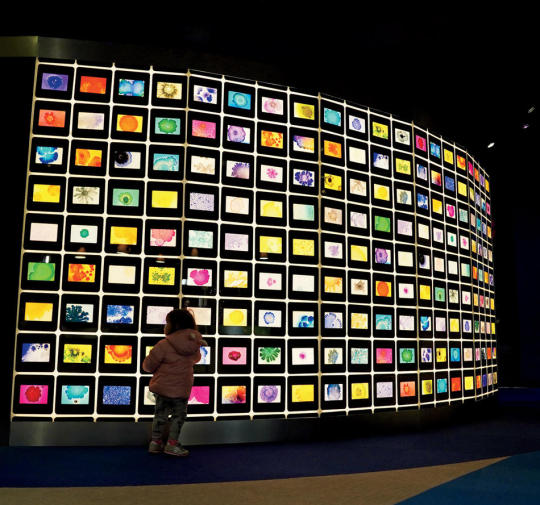
TAL DANINO RESIDENCY AT EYEBEAM
This residency at Eyebeam was one of his biggest exhibitions. This is something that I have been looking into for a while and this was something more about the way he displayed the work and the way that the light is behind the plates with the ‘bacteria’ on them. This is something that I looked into the last semester before I knew where I wanted to go with the bacteria art in general. It looks really abstract with the way that it has been displayed and I feel like with me trying to replicate something like this it would be quite easy to do with me being able to use small light boxes behind them to illuminate the work.
2 notes
·
View notes
Text
[Resubmission] 14/05/2020
Feedback suggested that the forms of my work should be altered to demonstrate more complexity. In place of being able to sculpt them, I have sketched designs. These forms were influenced by coral formations and shells, as well as the bacterial bioart of Tal Danino.
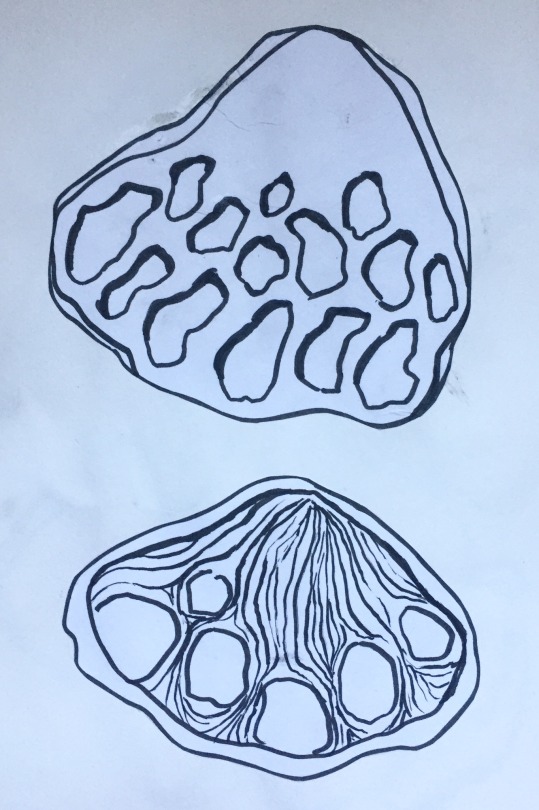


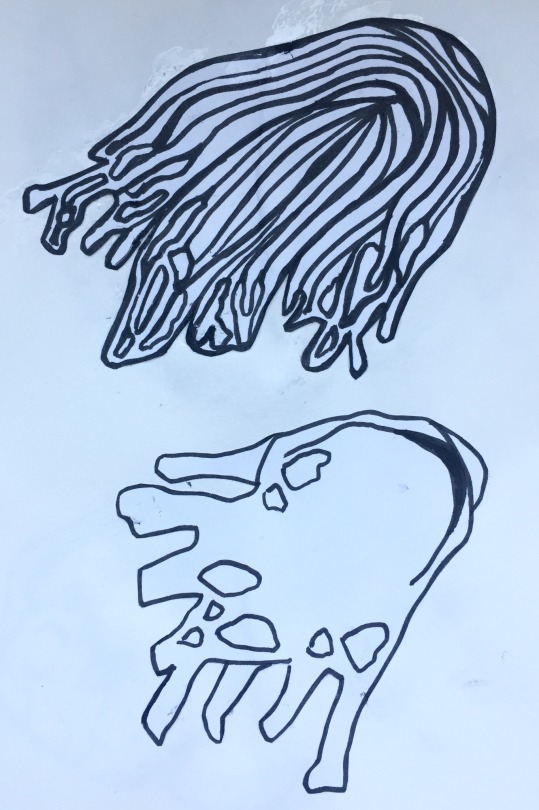


• I think these sketches are successful at showing more sophisticated structure and form, and manage to evoke the source of inspiration without directing replicating it.
• Reviewing them critically, I think there is a lack of cohesion between some of the designs that might make them hard to identify as a set or series.
• Following the above point, a limitation of these sketches is the lack of colour - a cohesive colour palette might solve some of the disparity.
• If I was sculpting them in clay, I would consider using clay that fires to have a textural, gritty, or speckled surface because this might better reflect the organic theme and provide more visual interest.
0 notes
Text
Biotechnology
Biotechnology in Design
Biotechnology is today a widely explored field of research with applications in the industry that cover a broad scope, from medicine and food production to the development of new materials and biomedical applications. All these applications are often referred to as Industrial Biotechnology.
We have a lot of knowledge of what happens in a cell, most of these processes are a result of proteins, molecular machines inside the cell that perform specific functions and interact with complex networks. The design of these machines, the instructions are contained in the code known as DNA. It is at the heart of biotechnology to create new instructions to develop new machines. It is also possible to use the existing instructions and combine them in new ways to repurpose the organism for different uses.
Recent developments with biotech include progression in synthetic biology, with scientists like Tal Danino being able to alter the genetic code of bacteria to fight diseases like cancer.
Moving up in scale from products to buildings, biotechnology has unique principles that can be applied to an architectural scale. The Digital Construction Platform (DCP) is an experimental enabling technology for large-scale digital manufacturing. Printing variable density concrete that is sensitive to the load condition of the building that saves on material costs and introduces new ways of construction. This digital construction platform can produce a building within a matter of days (MIT Media Lab. 2016). The hydraulic arm that is connected to the apparatus has multiple uses not only are they used to deposit material, but they also used to scan the environment capture optical, thermal and electromagnetic waves. This lets the DCP incorporate seismic load data that designs and builds the structure. Many building materials are also toxic to the environment Neri Oxman, American–Israeli designer and professor at the MIT discusses the benefits of using bio-degradable materials for printing construction.
An estimate of 6,300 million metric tones of plastic waste still circulated through 2018, 12% of which was incinerated with roughly 79% accumulating in either landfill or our natural environment. (Geyer et al. 2017). As only less 5% of plastic is recycled using biomaterials would significantly reduce our reliance on plastic. Neri Oxman suggests using Chitin (second most abundant bio-form on the planet) found in crustaceans and butterfly wings. This material becomes a hundred times more compliant at its root. This can potentially be used to wearables and building parts. One other advantage of using this material is that it can degrade in water, meaning no waste is produced (Bio-Inspired Design | Neri Oxman. 2016).
Silk Pavilion is another project that explores the relationship between digital and biological fabrication in design. The primary structure consisted of 26 polygonal panels made of silk threads laid down by a (Computer-Numerically Controlled) machine. Then 6500 silkworms started to generate a 3d cocoon out of a single multi-property silk thread. This resulted in 6500km of silk thread structure (Oxman, N. 2013).
In conclusion, there many uses for biotechnology that some range from food to medicine production, others to more synthetic purposes such as buildings, structures and engineered biodegradable materials. The rise of biodesign puts designers in a unique position. Some view biotech as the next trend of industry, meaning that industrial designers will be swapping plastic, metal, wood, and other materials that take energy to produce with living materials, like fungi or bacteria. For media designers to be successful in finding a role within this field, the position requires for the individual to have a strong fundamental understanding of biology, the ability to leverage engineering and computer science. Skills to manipulate DNA and most importantly, to have an awareness of technological implications on society. (SynBioBeta, 2016)
Group task:


In this workshop, we discussed synthetic biology and how artificial meats can be used our benefit. The video that we have seen was explaining how synthetic meat can change the way we diagnose health issues that are affecting us. Our task was to create an interactive interface for options to consume artificial meat. For this task, I created a relatively simple menu design that would work with both synthetic and non-synthetic products. The user has the option to tap on the logo to see the menu alternatives between real and synthetic meat as seen in the images above.
Bibliography:
SynBioBeta. (2016). The top 10 skills synthetic biologists in 2019. [online] Available at: https://synbiobeta.com/the-top-10-skills-synthetic-biologists-will-need-for-2019/ [Accessed 14 Jan. 2020].
Bio-Inspired Design | Neri Oxman. (2016). [video] Available at: https://www.youtube.com/watch?v=nAA0DfAdiIU [Accessed 14 Jan. 2020].
MIT Media Lab. (2016). Digital Construction Platform. [online] Available at: https://www.media.mit.edu/projects/digital-construction-platform-v-2/overview/ [Accessed 14 Jan. 2020].
Oxman, N. (2013). Silk Pavillion. [video] Available at: https://www.youtube.com/watch?v=eCG0M6T5sMU [Accessed 14 Jan. 2020].
Geyer, R., Jambeck, J. and Law, K. (2017). Production, use, and the fate of all plastics ever made. Science Advances, 3(7), p.e1700782.
0 notes
Text
The most beautiful bacteria you’ll ever see
Synthetic biologist Tal Danino manipulates microorganisms in his lab to create eye-catching, colourful patterns. Here’s a look at the process he uses to turn “Oh, yuck” into “Oh, wow.”
Synthetic biologist Tal Danino washes his hands constantly, one of the occupational hazards of working with bacteria all day at the Synthetic Biological Systems Lab, which he runs at New York City’s Columbia University. Danino, a TED Fellow, spends most of his time trying to harness bacteria’s unique properties — the same properties that can make them so dangerous for humans – and turn them into powerful cancer fighters. But when he’s not programming bacteria to fight cancer, he’s programming them to make art, in part to make difficult scientific principles more accessible. “It’s nice to use the visual arts to help communicate science,” he says, “and that’s because art really transcends the boundaries of language and also of knowledge.” Danino’s recent creative endeavors include a feminist installation of bacterial cultures taken from the bodies of 100 women (for which he collaborated with conceptual artist Anicka Yi), as well as a series of ceramic dishes inspired by naturally occurring bacterial patterns (a collaboration with artist and photographer Vik Muniz). For his latest project, Microuniverse, he produced a series of dazzling, abstract images created by different species of bacteria, each grown under different conditions for varying lengths of time. “The project is about getting to see this unseen universe that’s really small and all around us, every day,” he says. Here, he describes some of his strangely beautiful projects.

Proteus Mirabilis
The intriguing aesthetics of bacteria
Every day, Danino observes the intricate patterns that bacteria form in dozens of petri dishes in his lab. As their cells grow, divide and communicate with each other, they self-organize into colonies to maximize their chances of survival. The patterns they form are determined by both their genetic makeup and their environment. Selecting bacteria that are known to generate certain patterns — for instance, E. coli naturally grows as a fractal, whereas Proteus mirabilis grows as concentric rings — as well as interesting-looking bacteria from soil samples taken in his own backyard, Danino and his team began to experiment with controlling their growth patterns. Ultimately, he hopes that if they could better understand how nature shapes behaviors and patterns in bacteria, it might in turn inspire their work engineering them to fight cancer.

Probiotic bacteria
Alter the environment, alter the design
By changing the conditions — like the temperature and humidity — under which the bacteria are grown, Danino found he was able to manipulate them into creating certain patterns. For instance, the optimal temperature for growth of many bacteria is 37 degrees Celsius, which is, unsurprisingly, the temperature of the human body. If it’s hotter or colder than 37 degrees, bacteria growth will simply slow. Humidity affects the bacteria in a different way: the drier the environment, the more likely the bacteria are to group together to conserve moisture. Changing the concentration of agar gel — the growth medium for bacteria — on the petri dish also affects patterning, says Danino. The softer the gel, the faster the bacteria spread across a wider area.

Soil bacteria
Wait and watch
Once Danino sets the initial conditions, he lets the bacteria grow and waits for the results. He used about 20 different species of bacteria for Microuniverse, letting them grow for as few as two days and as long as two months. Regardless of the conditions in which they’re raised, “each bacteria has a natural preference for a type of pattern,” he says. “And it has to do with the specifics of how bacteria swim and how they communicate with each other. They each have their own personalities, if you will.”

E.coli variant
Colonies of colour
It’s standard for scientists to use chemical dyes to gather information about a bacteria’s structure. If they want to distinguish Streptococcus pyogenes from E. coli, for instance, they will stain a dish to reveal the shapes of the cells, allowing them to identify them visually. “Scientists mostly look at just single-color images,” Danino says, “so we just played off of that.” In addition to traditional scientific dyes, he also experimented with using food coloring on the agar as well as on the bacteria themselves. He also tried out various color combinations to achieve a gradient effect, as in this image above.

Soil bacteria
Exposing an unseen universe
“Every framed image or every petri dish is its own little world,” Danino says. “Those patterns look like something that you could see in a snowflake, something that you could see underwater.” With each petri dish, the project aims to represent an abstract universe all its own. “I started seeing these petri dishes, and I was like, whoa, that looks like something you would see in outer space.” Hence, the name Microuniverse.
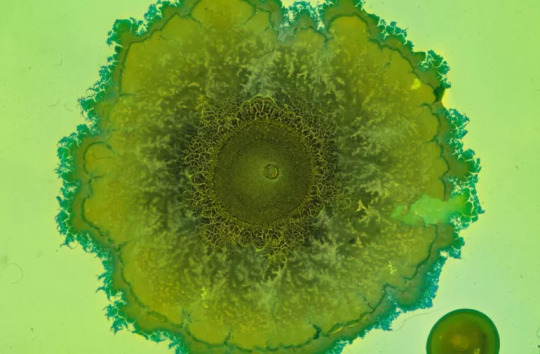
Bacillus Subtilis variant
The process of molecular cloning
Danino’s art projects are something he does in his spare time. His days are taken up with work in synthetic biology, a relatively nascent scientific field which, broadly defined, involves engineering living organisms to achieve a desired behavior. In his lab, Danino edits and programs bacteria using a process called molecular cloning. After identifying which gene sequences create a certain biological function in a type of bacteria, he and his team can isolate these sequences, amplify them in the lab, and then insert them into the DNA of the bacteria they want to exhibit that function. “Nowadays, you can actually type in that sequence online, and a company will produce that sequence synthetically and send it to you in a tube,” Danino says.

Soil Bacteria
Harnessing its anti-cancer potential
Recently, Danino and his team have been engineering bacteria — they’ve been working with E.coli, an E.coli probiotic, and Salmonella — to detect and treat cancer. Remarkably, bacteria can grow inside tumors where even the immune system can’t reach, and they can also be programmed to produce various toxins that cause tumor cell death. Using molecular cloning, Danino is attempting to program bacteria to detect and reveal tumors in the body and also to release cancer-fighting toxins once inside them. “It’s almost like a Trojan-horse type situation,” he explains. “Bacteria get into the tumor and then they start making the drug, and then the tumor can actually slow down or decay.”

Microuniverse (close up), Eyebeam exhibit, New York City
A visual gateway to science
Danino hopes projects like Microuniverse will inspire people to learn more about the complex microbial worlds all around — and inside — us and to show them that bacteria can be used for positive purposes, like fighting cancer. “It’s really difficult to teach people about DNA and proteins and molecular cloning,” he says. “But I think when you see an image, regardless of your background, it attracts you to learn more about the science.” What’s next for the project: Danino has partnered with the company Print All Over Me to create custom apparel based on the images of bacteria from Microuniverse (part of the proceeds will go towards cancer research). He also hopes to continue touring Microuniverse, which will be on exhibit at MIT later in 2017. His lab is also working to capture time-lapse videos of the bacteria growth which means, that’s right, E. coli could be coming soon to a theater near you.
All images: Soonhee Moon.
Author: Patrick D’Arcy is the Editorial Manager of the TED Fellows program.
Credit: http://ideas.ted.com/gallery-the-most-beautiful-bacteria-youll-ever-see/?utm_campaign=social&utm_medium=referral&utm_source=facebook.com&utm_content=ideas-blog&utm_term=science
3 notes
·
View notes
Photo
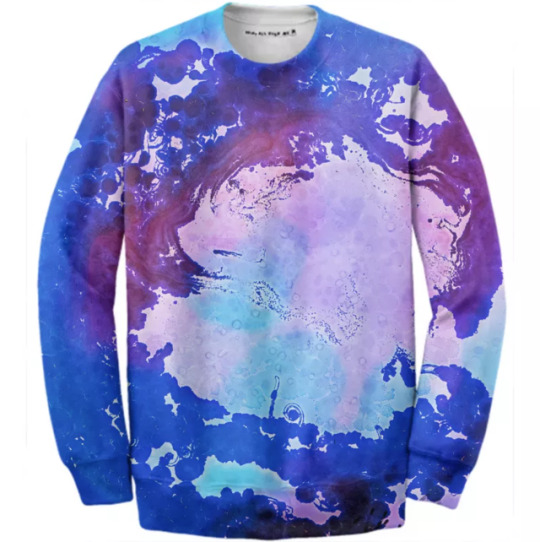
Bacteria sweatshirt by Danino Lab
2 notes
·
View notes
Text
Bacteria as Living Microrobots to Fight Cancer
Autonomous, living microrobots that seek and destroy cancer are not as futuristic as one might imagine, thanks to a fusion of robotics and synthetic biology.
Simone Schuerle, and Tal Danino Apr 1, 2020, The Scientist
The idea of using bacteria to treat cancer is not new. One of the earliest reports on bacteria as a cancer therapy comes from the immunotherapy pioneer William Coley, who in…
View On WordPress
0 notes
